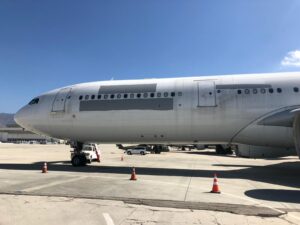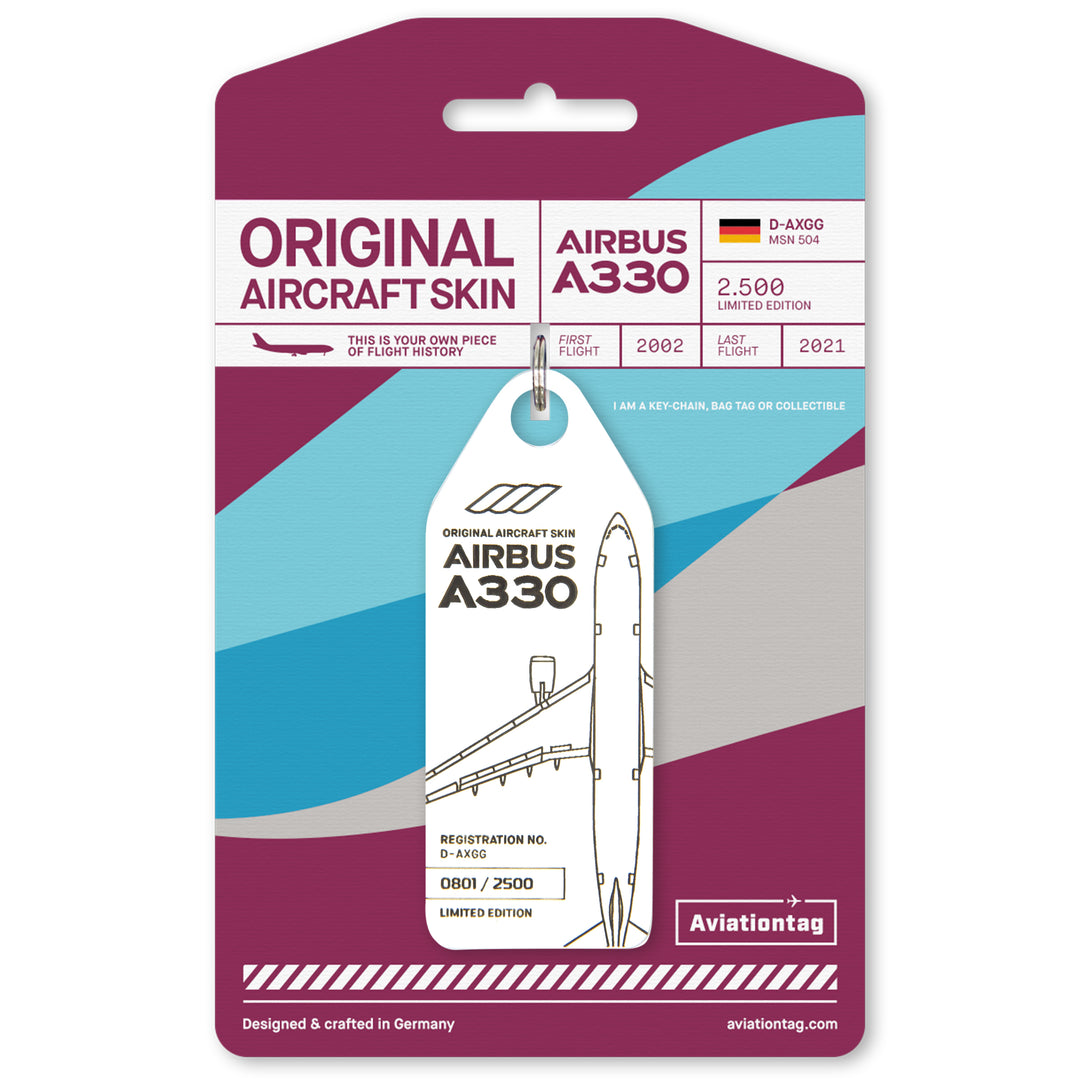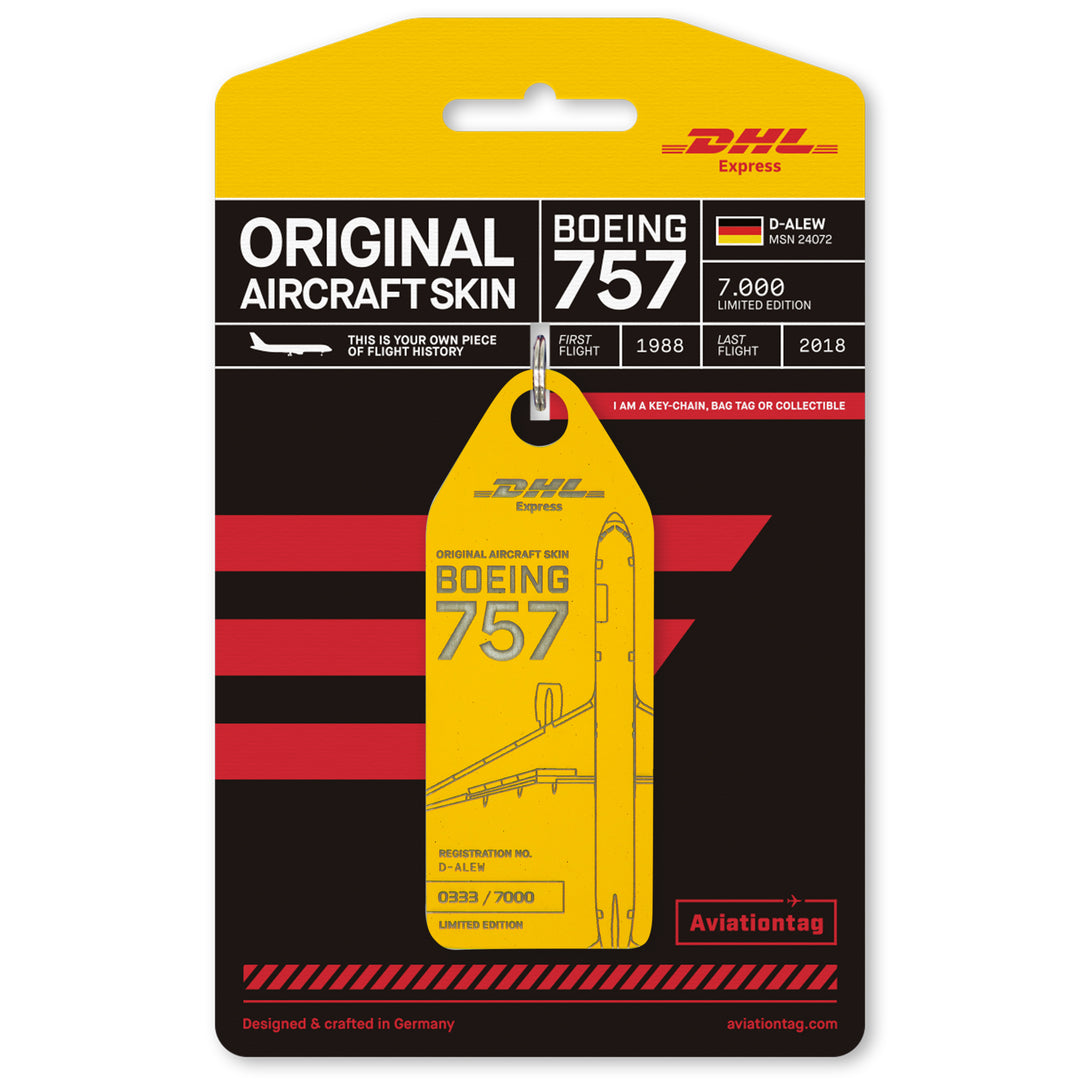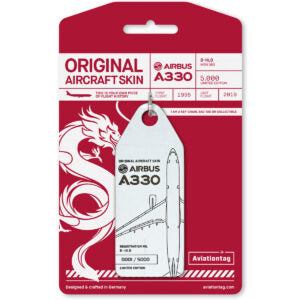Aviationtag’s A330 B-HLB tag is a precious and perfect collectible to tell the tale of an odd couple from Hong Kong. With a piece of B-HLB’s white tag, you don’t only own a piece of Dragonair’s relic, but also of the giant Cathay Pacific.
The skies of Hong Kong and Asia had been dominated by the British-owned Cathay Pacific for decades when the city state was still a British Crown Colony before 1997. Originally a direct competitor to Cathay, Dragonair was founded by Hong Kong’s local Chinese capitals with the blessing of China in 1985. However, from day one onwards, Dragonair lacked the resources and favourable government policies to compete with Cathay. Eventually, this start-up failed financially and was instead absorbed by Cathay and its parent company Swire in 1990. This takeover turned out to be a blessing to the young Dragonair. Under Cathay’s management, it was positioned as Hong Kong’s regional carrier with a focus on China and some secondary Asian destinations to provide feeder traffic to Cathay’s global network. With shared strategies and resources, including the common use of the Rolls Royce-powered A330-342s, these two airlines jointly built Hong Kong as the super hub in Asia-Pacific. Born as Cathay’s VR-HLB in 1995, this A330-300 was the carrier’s second A330 to join its fleet to inaugurate the newly rebranded Brushwing logo. On July 1, 1997, as Hong Kong’s sovereignty was transferred to China, all Cathay and Dragonair aircraft were re-registered from British Hong Kong’s “VR-xxx” registration to Hong Kong, China’s “B-xxx”. Therefore, Cathay’s VR-HLB became B-HLB soon after the handover.

In the early 2000s, more additional Chinese state capitals gained control of Dragonair. This new move gained Dragonair a higher degree of independence from Cathay. Like Cathay, Dragonair became very prestigious in service delivery and a financial success even in the face of the Asian financial crisis, 911, the Second Gulf War and the 2003 SARS outbreak. It had been awarded the best regional carriers in the Greater China Region for consecutive years. While the two Hong Kong airlines were still siblings under Swire and sharing key resources, Dragonair, now a grown young adult with potential and an ambition to become the ANA, EVA Air or Asiana of Hong Kong, started to step into Cathay’s realm by launching its intercontinental 747 freighter service to Frankfurt, Manchester, Amsterdam, Dubai and Osaka, and passenger service to Cathay’s primary destinations like Taipei, Bangkok and Tokyo. It even started to acquire A330-343Xs to prepare for the launch of intercontinental routes like Sydney. All these passionate expansions came to an abrupt end in 2006 when Cathay, Swire and their counterparts from China concluded that Dragonair should remain a non-competitive regional feeder under Cathay’s full control, whereas Cathay should be held by further additional Chinese state capitals. As a result, Dragonair was downsized and restructured, and a large number of Cathay’s older A330 fleet, including B-HLB (in 2011) and the world’s first A330 B-HLJ, were transferred to Dragonair to serve its fast growing regional trunk routes. Unlike the sales of aircraft between different airlines in many cases, all the registration numbers remained the same in the transfer between Cathay and Dragonair. The path of Cathay and Dragonair has been quite similar to that of their long-time rivals Singapore Airlines and Silk Air. In both cities, the smaller regional brands eventually lost their identity and ceased to exist. In the case of Dragonair, it was rebranded by Cathay as Cathay Dragon in 2017. This rebranding with a burgundy Cathay Brushwing to replace the iconic bright red Dragon somehow did not meet with enthusiasm by its staff and customers. Aviation fans, as well as the general public, still pledged their loyalty to the Dragonair brand, and few really got used to saying the new name, not even the local news reporters and almost everyone working at the airport. The fate of Dragonair came to an unexpected end in October 2020 when it became one of the aviation world’s COVID-19 victims, despite it had been a money-making machine for years for Cathay. Dragonair’s untimely end was a huge sad news to the people in Hong Kong in the midst of an unprecedented time, but to a certain extent, it was a very logical solution for Cathay to answer the rise of low-cost regional travel and the undefined post-COVID-19 world. Born as Cathay’s VR-HLB and decommissioned as Dragonair’s B-HLB, this aircraft had never worn the less appreciated Cathay Dragon livery. In September 2019, it retired and left Hong Kong International Airport for California in the beloved and respected original Dragonair white livery.

When you hold a piece of B-HLB on hand, try to imagine its countless take-offs and landings at the legendary Kai Tak Airport over downtown Hong Kong in Cathay’s Brushwing livery, its historic change of nationality overnight from British Hong Kong to Hong Kong SAR under China in 1997, and the reluctant retreat of an almost famous carrier named Dragonair. Article (c) by KT Aviation historian specialized in Cathay Pacific and Dragonair Check out KT’s Hobbies YouTube channel: https://www.youtube.com/channel/UCdliCkvMWr9NB5ofZ1ipsVg











Leave a comment